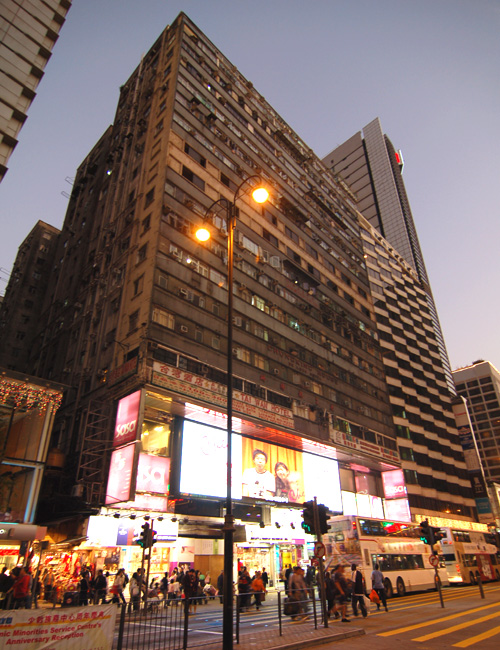The Chungking Mansions are an example of a unique building typology that has grown out the intense urban density of Hong Kong. A simple concrete structure consisting of a two level commercial plinth and five 17 story tower blocks stacked above, it is a vernacular form of architecture that first developed in the 1960, and was repeated in similar form throughout Hong Kong.
Built in 1961, and only incrementally renovated since, the building pushes or has broken the limits of its electrical, mechanical and occupancy capacities. The Chungking mansions contain the largest number of guestrooms of any building in Hong Kong, a staggering 980 rooms scattered throughout the complex in dozens of hostels and cheap hotels. It is estimated to be home to 4000 residents and in addition to the many retail and commercial businesses it can easily contain over 10,000 occupants on a given day, virtually a self contained city. Because of the intense competition among guesthouses, It has developed a reputation as having the cheapest housing in Hong Kong, a condition that attracts a steady flow of backpackers, guest workers, and illegal immigrants to its doors.
The mansions are in particular home to a large immigrant population from
Nigeria, Nepal, and Pakistan, which has fostered a community of ethnic restaurants
and markets throughout the complex which cater to a community immigrants to
whom Chungking provides a first foothold in a new world. The constant flux
of immigrants and dropouts has only increased the buildings reputation as
a location for illegal activity, including prostitution, smuggling rings,
and robbery. The building atmosphere has led to its famous roles in the films
Chungking Express and Fallen angels where its rough edges represent the gritty
side of hong kong.
